The Jewish Museum in Berlin
After my experience at the Memorial to the Murdered Jews of Europe, I was apprehensive about visiting the Jewish Museum in Berlin.
This, I thought, is something they will have to get right. After all, Berlin was Hitler’s capital city, the place where leaders managed the bureaucratic tasks necessary to carry out the genocide he planned. You could say that this city, more than anywhere else, carries the weight of Germany’s guilt.
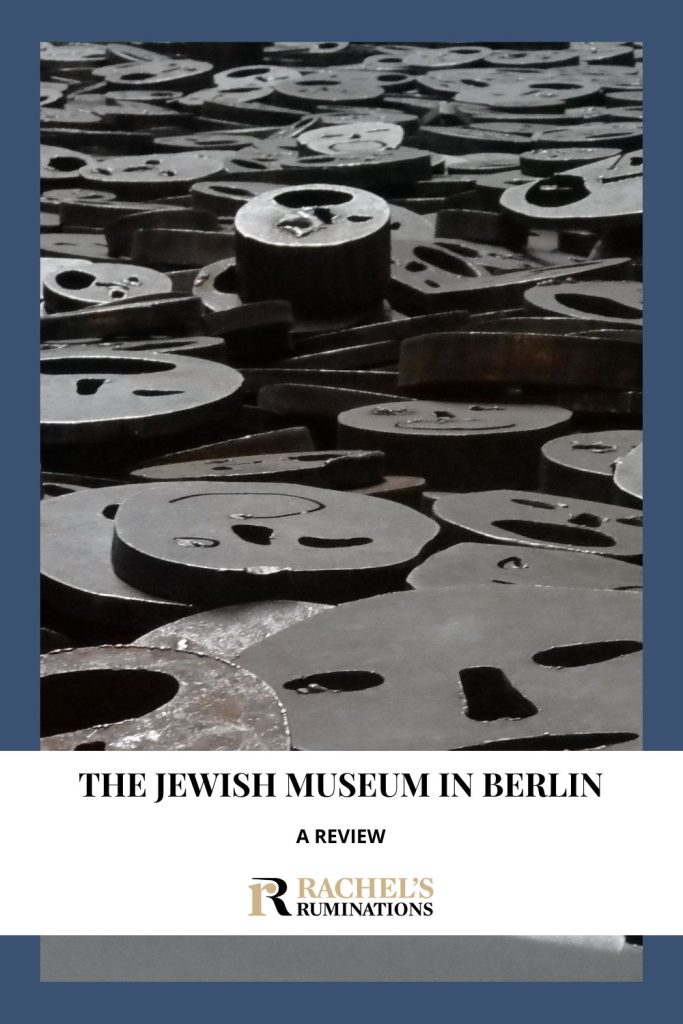
Disclosure: This article contains affiliate links. Making a purchase through an affiliate link will mean a small commission for this website. This will not affect your price.
As I approached it, walking from the metro station, the first thing I noticed was the unusual building. Metallic-looking, it has narrow windows in slanted lines that look like slashes in the structure. I couldn’t get a good look at the whole building from ground level, but was able to look at it later on google maps. It does not resemble a swastika, but somehow evokes one, or perhaps I should say a partially unbent swastika.
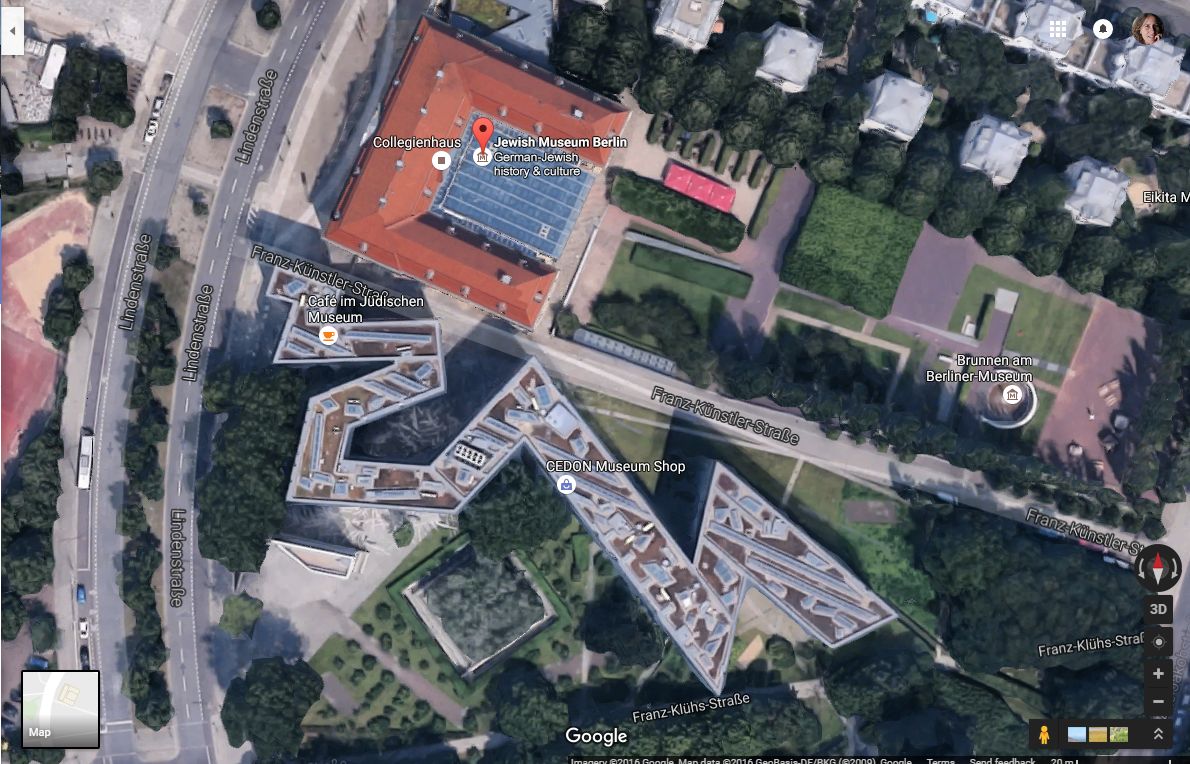
The next thing I noticed was the level of security around the building. Policemen patrolled, and signs prohibited any vehicle from parking or even stopping in the vicinity. Heavy concrete blocks would, presumably, stop a car from ramming the building. Certainly the building’s metal exterior itself looks weighty enough to withstand an attack.
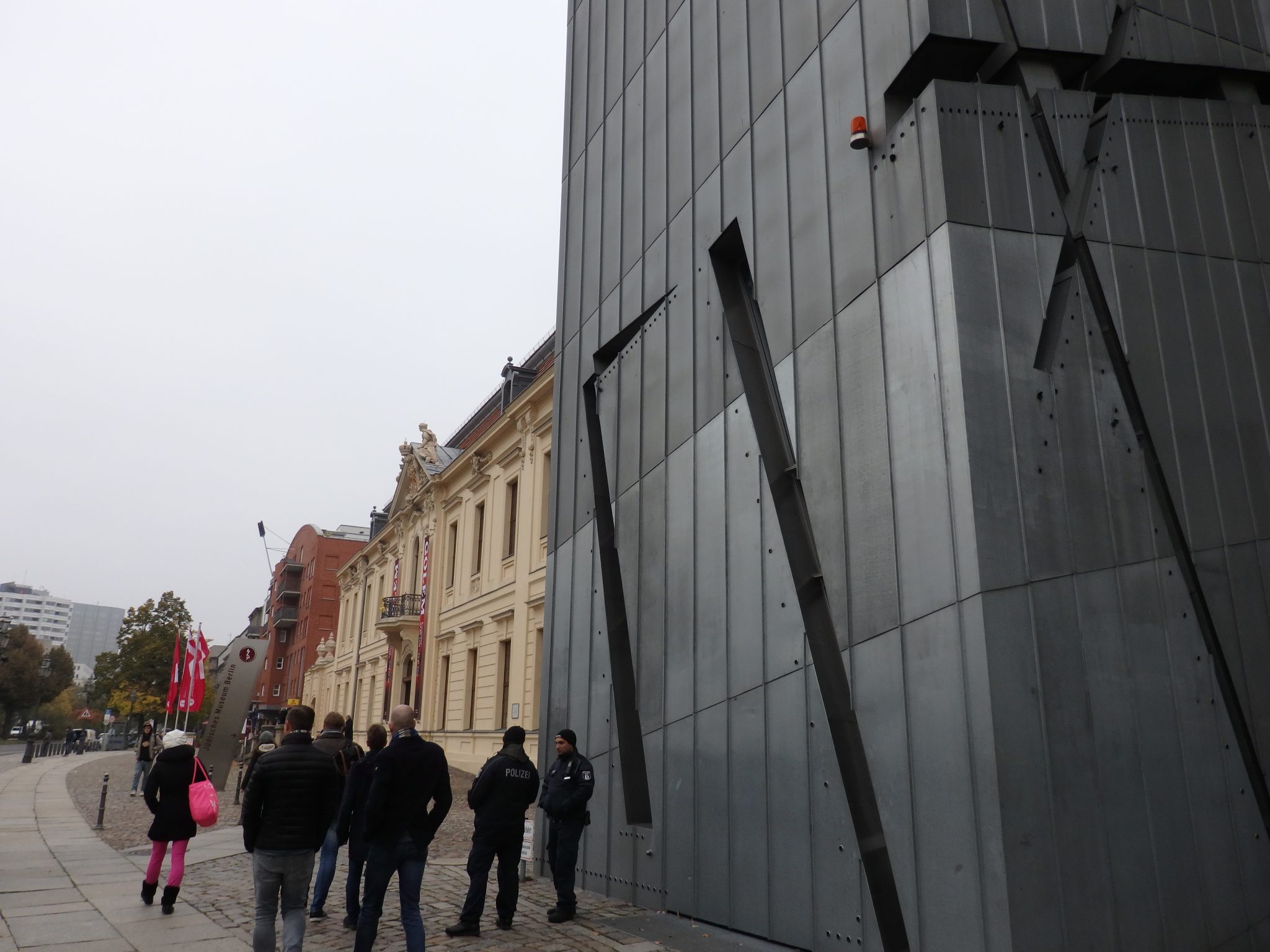
The “axes” in the Jewish Museum
Entering the old section of the museum, I followed the signs downstairs to Level 1 to explore a series of crisscrossing hallways.
Called the Axis of Exile, the Axis of the Holocaust and the Axis of Continuity, I felt slightly off-balance as I walked these halls. The floors slanted, and the hallways crossed at irregular angles.
Here and there along the white-painted walls were glass windows, behind which ordinary objects sat under low lights. These objects – a personal letter, a handmade calendar, a silver spoon, a beaded handbag, and so on – were accompanied by small signs explaining who owned them and what happened to them. The objects in the Axis of Exile were either left behind or carried as Jews fled. Most of the owners of objects in the Axis of the Holocaust perished in concentration camps.
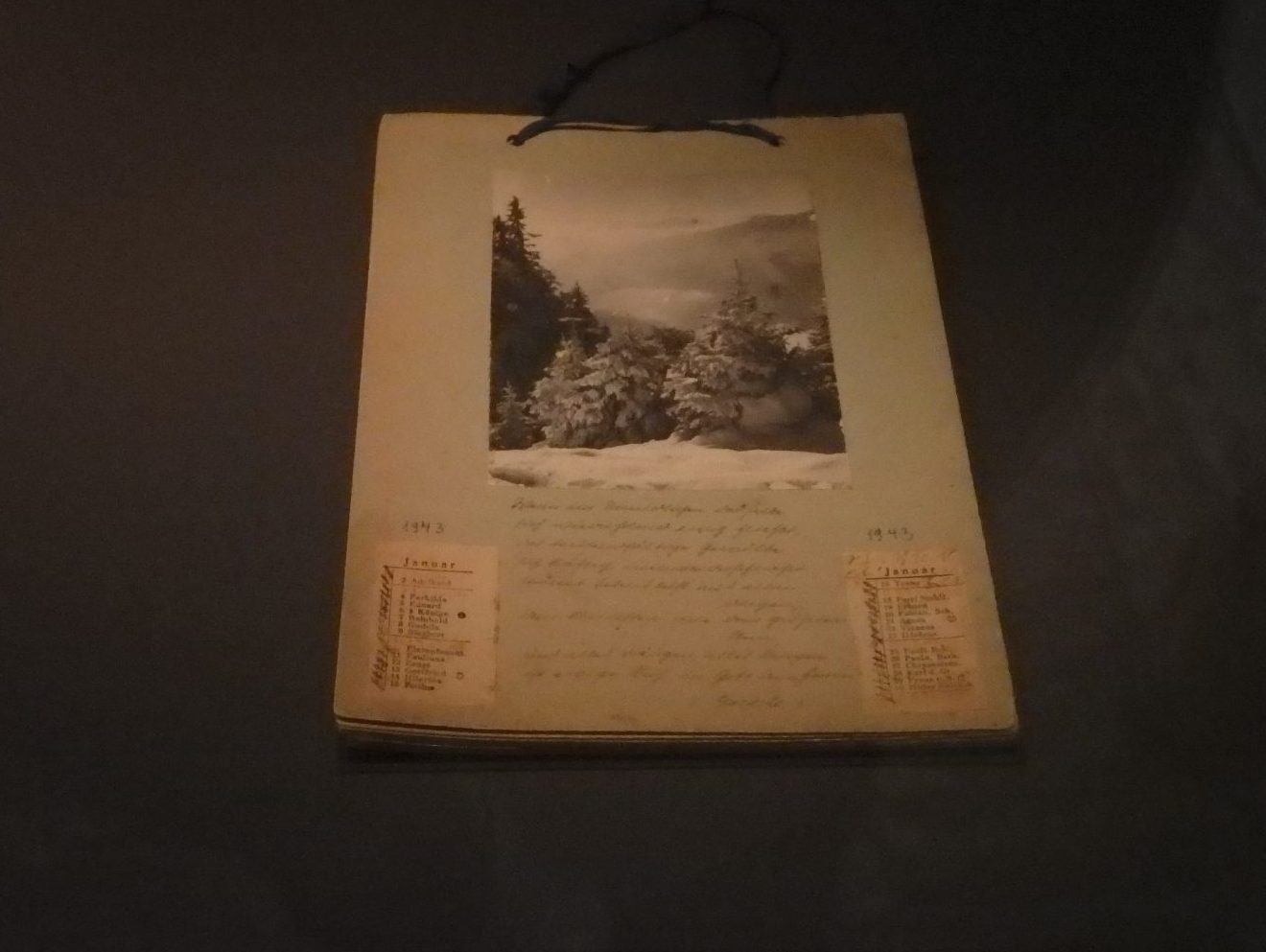
These objects were ordinary, everyday, unremarkable items, which made reading their stories all the more touching. Each represents millions of similar examples, and by extension, millions of people. I fought off tears as I read the stories.
There weren’t many windows or many objects. It puzzled me. This is a museum? It doesn’t tell the whole story; just these bits and pieces.
To me, it was an effective memorial more than a museum. That pleased me, because the Memorial to the Murdered Jews of Europe doesn’t really work as a memorial.
The Jewish Museum building
Designed by Daniel Libeskind, the building itself is particularly impressive in its ability to provoke a response. The “Holocaust Tower” at the end of the Axis of the Holocaust is a hollow, dark, concrete-walled gap. Walking in, letting the door close behind me, I felt alone, unheard, caged. I found myself looking up repeatedly, to the light source several stories above: an opening to the outside.
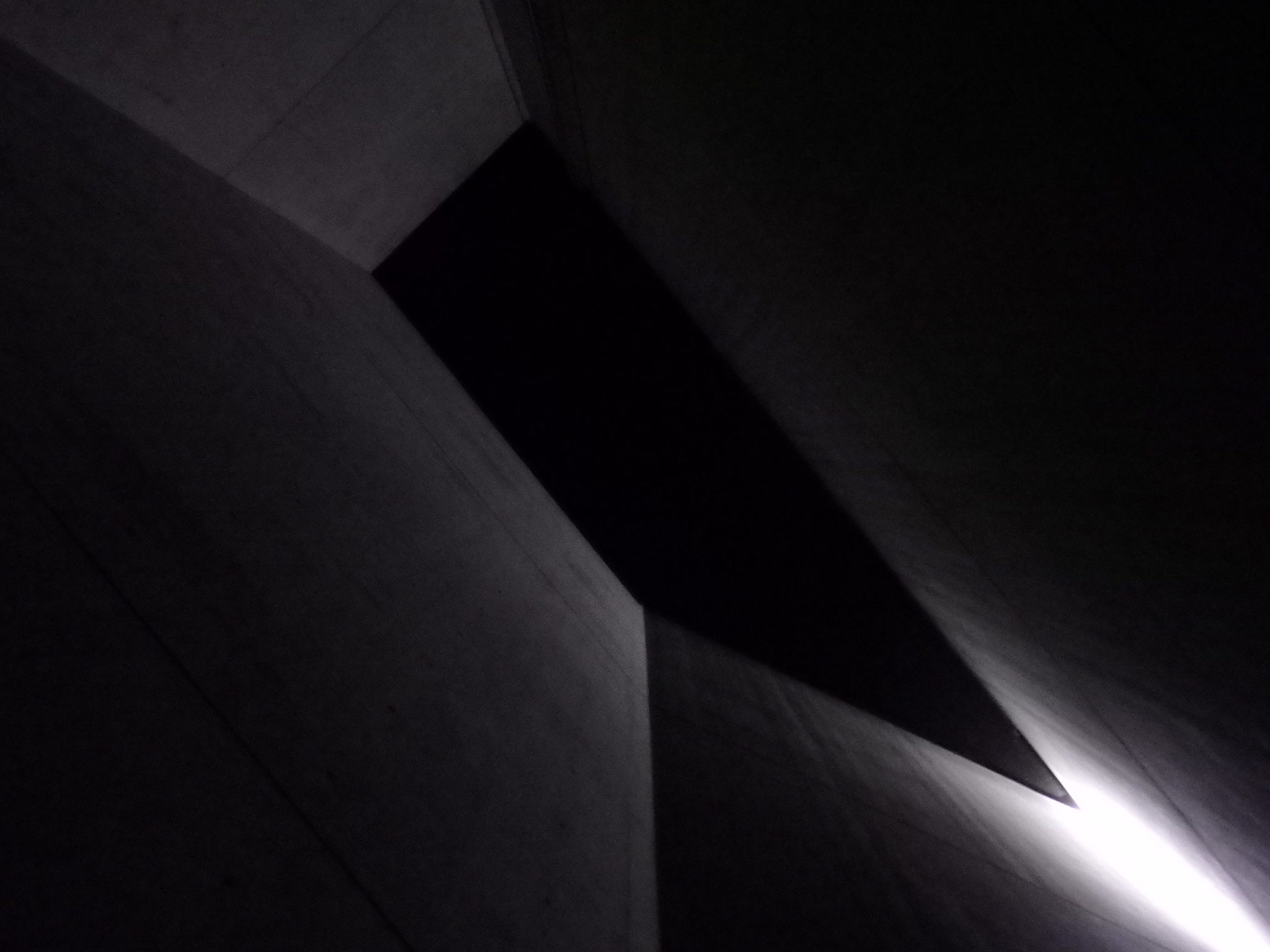
The architect intentionally left several such vertical cuts in the building, evoking feelings of vulnerability and discomfort in visitors, just as the slanting floors and stark white walls of the axis hallways do. The vertical “voids” are meant to represent the absence of Jews from German society.
You might also want to read my article about lots of World War II and Cold War sites in Berlin that you can visit.
The Memory Void
The “Memory Void” is the name for another gap upstairs. Again, it’s a tall, sharp-angled, empty space with concrete walls and light from above. But in this case the floor is covered with more than 10,000 round metal plates shaped like faces with gaping mouths. Visitors walking on the faces must step carefully to avoid falling on the uneven surfaces, and the faces clank harshly with a metal-on-metal sound. The Jews who are absent from German society are physically represented here, and their scream is metallic.
An Israeli, Menashe Kadishman, created this artwork, calling it “Fallen Leaves.” A sign at the entrance says he dedicated the work to all innocent victims of war and violence.
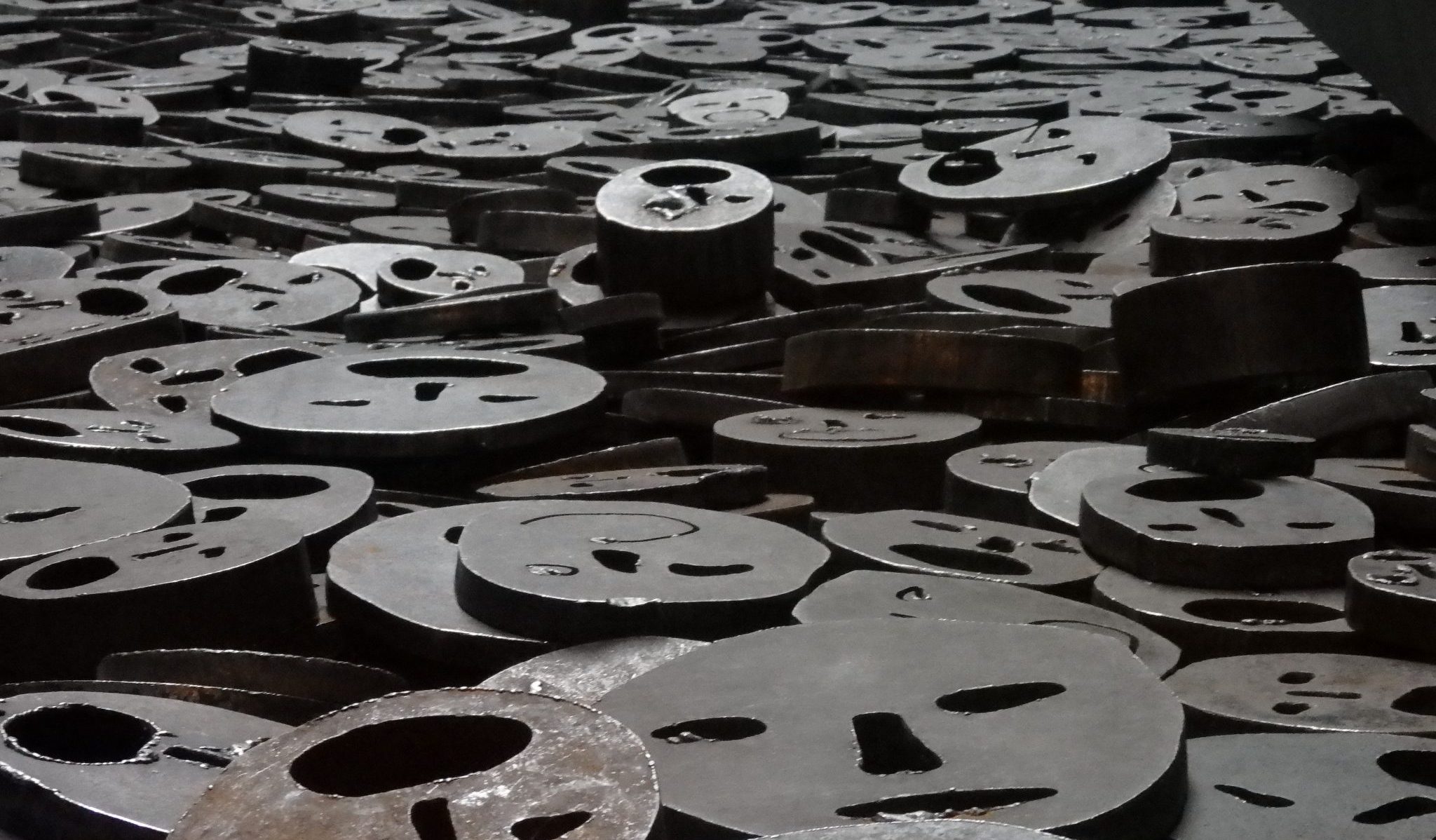
Use the map below to book your accommodations in Berlin:
Upstairs at the Jewish Museum
I climbed a long stairway that looked like it ended in a blank wall, only to find, at its top landing, an opening into the more traditional part of the museum. Exhibits here illustrate all aspects of Jewish life in Germany, starting from 950 to today.
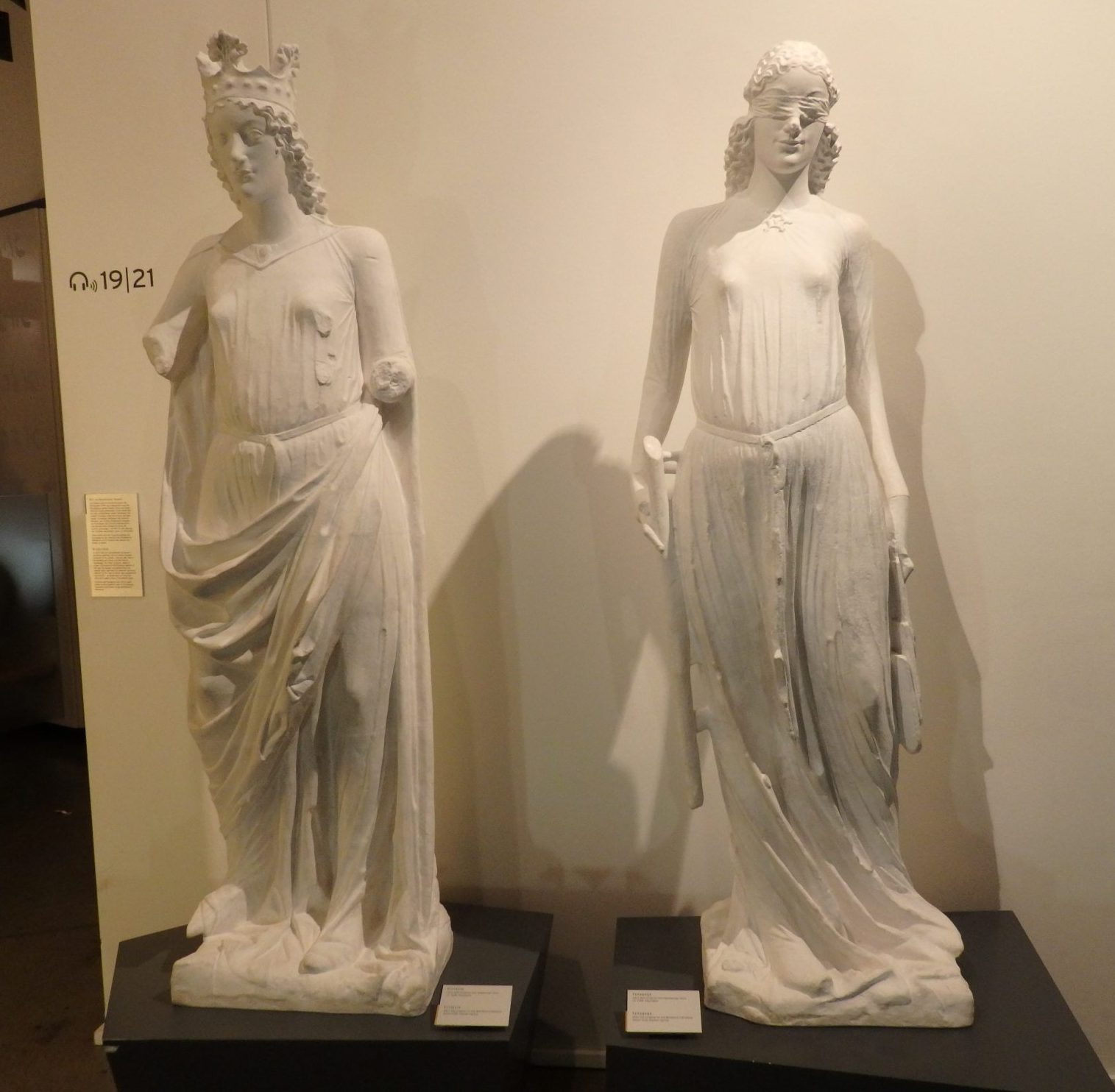
The sections are divided to some extent by time period, but sometimes also by topic. For example, a section on Jews and their contribution to Berlin covers 1890-1933. A section on Zionism covers 1900-1933. Not surprisingly, several other sections also cover time periods ending in 1933.
The history of Jews in Germany was largely a history of limitations until the 19th and 20th century. Laws restricted their movement, their professions, and so forth. Given those historical limitations, I was particularly surprised at just how assimilated the Jewish community became in the 19th and early 20th century. Many, for example, had a Christmas tree, seeing it as a symbol of German culture rather than of Christianity.
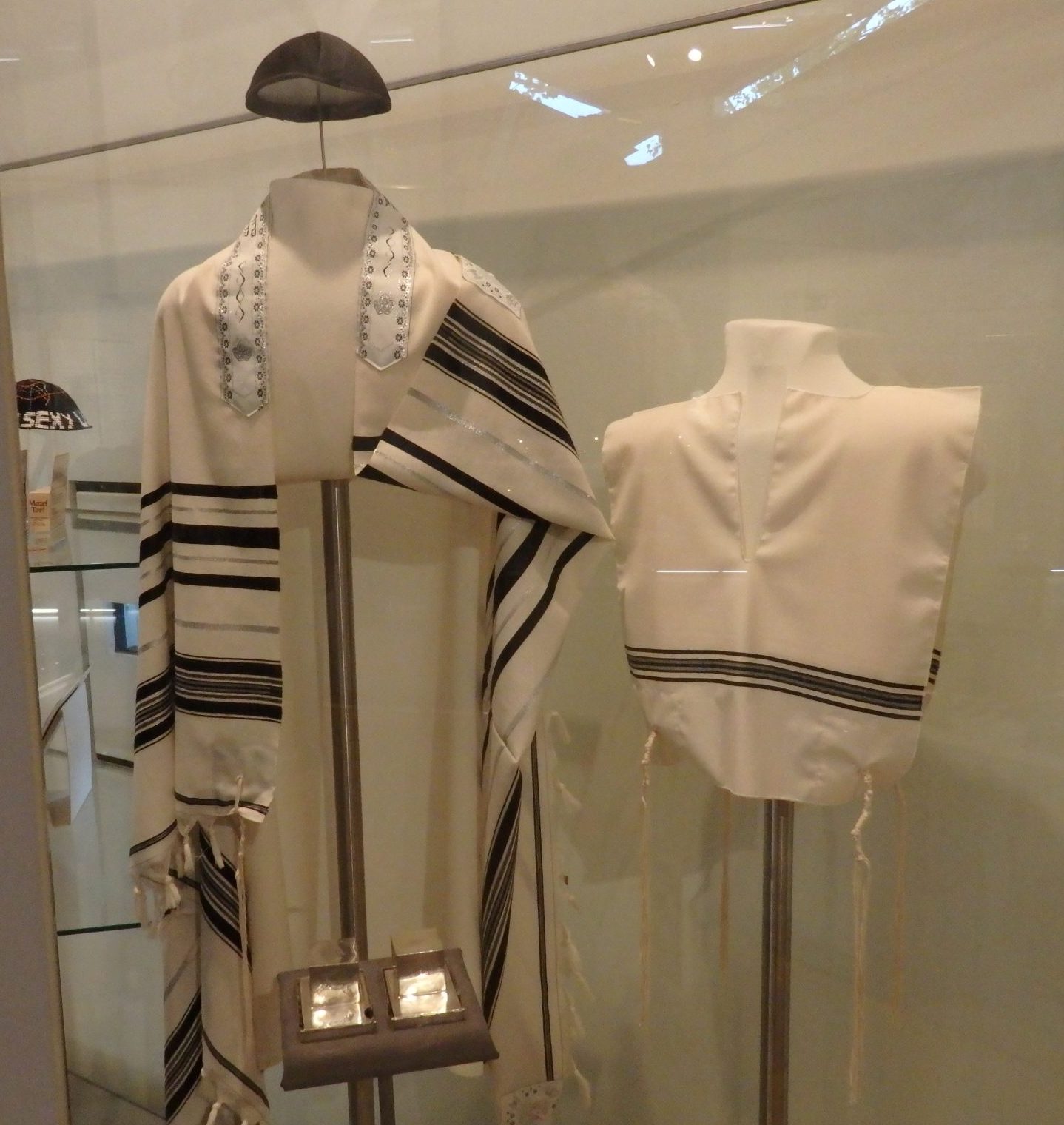
The museum exhibits end with two sections called “National Socialism, 1933-1945” and “Present, 1945-Today.” The museum’s approach to these periods is clear and blunt. It makes no attempt to minimize the deeds of the German leaders or people in any way. I felt a certain sense of relief in seeing that, but also didn’t feel like I could face studying this section in detail. I’d done that in the Axis hallways below, and that was enough.
Telling stories with objects at the Jewish Museum
The museum’s focus is “telling stories with objects” and they do it well. Often these are objects linked to a specific person or family, and signs allow us to read the thoughts of the person, and also they explain the object’s story. It’s an effective, personal way to show the more recent history in particular.
The Jewish Museum is remarkably well-done. Level 1 pushes visitors off balance, forcing them to confront the exile of Jews from Germany as well as the Holocaust that took most of the ones who remained. Then Level 2 provides the background: who were (and are) these people that Germany tried to wipe out?
We often talk about the Holocaust in terms of numbers: six million Jews were murdered by the Nazis, along with another four million Roma, Sinti, homosexuals, and others. These numbers are hard to grasp, but also easier to deal with than to look at individuals. By focusing on personal objects, the museum humanizes the Jewish victims of the Holocaust. It makes the story real.
Jewish Museum Berlin: Lindenstraat 9-14, Berlin. U-Bahn stations Kochstraße/Checkpoint Charlie or Hallesche Tor. Open daily 10:00-18:00. Admission: The core exhibition described above has free admission. Download the JMB app for a free audio guide. Temporary exhibitions cost €10 for adults and kids under 18 are free. The building is completely wheelchair-accessible, though the axes on Level 1 are somewhat inclined. Website.
My travel recommendations
Planning travel
- Skyscanner is where I always start my flight searches.
- Booking.com is the company I use most for finding accommodations. If you prefer, Expedia offers more or less the same.
- Discover Cars offers an easy way to compare prices from all of the major car-rental companies in one place.
- Use Viator or GetYourGuide to find walking tours, day tours, airport pickups, city cards, tickets and whatever else you need at your destination.
- Bookmundi is great when you’re looking for a longer tour of a few days to a few weeks, private or with a group, pretty much anywhere in the world. Lots of different tour companies list their tours here, so you can comparison shop.
- GetTransfer is the place to book your airport-to-hotel transfers (and vice-versa). It’s so reassuring to have this all set up and paid for ahead of time, rather than having to make decisions after a long, tiring flight!
- Buy a GoCity Pass when you’re planning to do a lot of sightseeing on a city trip. It can save you a lot on admissions to museums and other attractions in big cities like New York and Amsterdam.
- Ferryhopper is a convenient way to book ferries ahead of time. They cover ferry bookings in 33 different countries at last count.
Other travel-related items
- It’s really awkward to have to rely on WIFI when you travel overseas. I’ve tried several e-sim cards, and GigSky’s e-sim was the one that was easiest to activate and use. You buy it through their app and activate it when you need it. Use the code RACHEL10 to get a 10% discount!
- Another option I just recently tried for the first time is a portable wifi modem by WifiCandy. It supports up to 8 devices and you just carry it along in your pocket or bag! If you’re traveling with a family or group, it might end up cheaper to use than an e-sim. Use the code RACHELSRUMINATIONS for a 10% discount.
- I’m a fan of SCOTTeVEST’s jackets and vests because when I wear one, I don’t have to carry a handbag. I feel like all my stuff is safer when I travel because it’s in inside pockets close to my body.
- I use ExpressVPN on my phone and laptop when I travel. It keeps me safe from hackers when I use public or hotel wifi.



While in Munich in 2015 we visited Dachau Prison Camp and it was incredibly moving. So difficult to experience, but so important to bare witness and we learned so much.
In Washington, DC there is the Holocaust Museum that is excellent, if excellent is used to describe such a horrific time in history. But, the museum visitor is transported back to the event through recorded history. Again, very difficult to experience but so important.
Sadly, it seems as if history keeps repeating itself time and time again, even in 2016.
I’ve been to the one in Israel called Yad Vashem, but not the one in Washington yet. This one in Berlin, though, isn’t really a Holocaust museum. It’s a Jewish museum but, being in Berlin, it had to address the Holocaust in some way, without that turning into the focus of the whole museum. I think they did a good job finding that balance.
We didn’t get to visit the Jewish Museum on our trip to Berlin, but after reading your post I wish we had. Hopefully next time.
I always question myself when I go to war museums. What they show us are events and people that should not be forgotten, but it can be so hard to experience the tragedies through the exhibits and the stories. I visited the Tuol Sleng Genocide Museum and the Killing Fields in Cambodia. I’m glad that I did, but have to say that I felt like someone punched me in the stomach. I don’t think I would ever go back to either. Thanks for co-hosting this week. #TPThursday
I feel the same way. I often don’t want to go to these sorts of memorials or museums because I’m traveling to have fun. Yet I feel it’s important to remember, to honor. And I also feel it’s important to support the efforts of those who set up and run such places of memory. Especially in Berlin, I didn’t feel like I could ignore either the Holocaust history or the Cold War history.
As a proud Jewess, I loved this museum so much.
Of course, I HATE why it exists in the first place, but because it is imperative to see and feel the memories. Also to be reminded that anything LIKE The Holocaust must NEVER happen again.
I loved looking at the silverware, and tried to imagine the families eating Sabbath Dinner one night and the next day……..ugh. I also remember being in that room with the closed door and dark grey walls, that simulated what it was like…
Thanks for this post. PS. I have that same photo of the “fallen leaves”
NEVER AGAIN! Next year in Jerusalem:-)
Next year in Jerusalem! (For the non-Jews reading this, that’s a phrase that finishes the Passover meal, the seder.) And this coming Passover I will be in Jerusalem!
Thanks for this post, Rachel. And thx for explaining the “Next year in Jerusalem” quote as well. I’m sure that will be an epic journey.
I’ve been there quite a few times before because I have family in or near Jerusalem. Passover is particularly special with them!
I’m glad the Jewish Museum addresses the holocaust in a balanced way I still haven’t been to Berlin but visited Dachau years ago. The energy there was thick with sorrow, and experience I will never forget.
Oddly, I found this exceptional museum to be almost cozy.
BTW, I don’t understand what the step is that links a blog into your Travel Photo Thursday link-up.
I didn’t feel cozy at all. I felt off-balance the whole time. Are you asking how to join the link-up? They close after a week. If you look at the latest one, which is on my Christmas market post https://rachelsruminations.com/christmas-markets-germany/, you’ll see that there’s a little button below the pictures that you can click on to add your link.